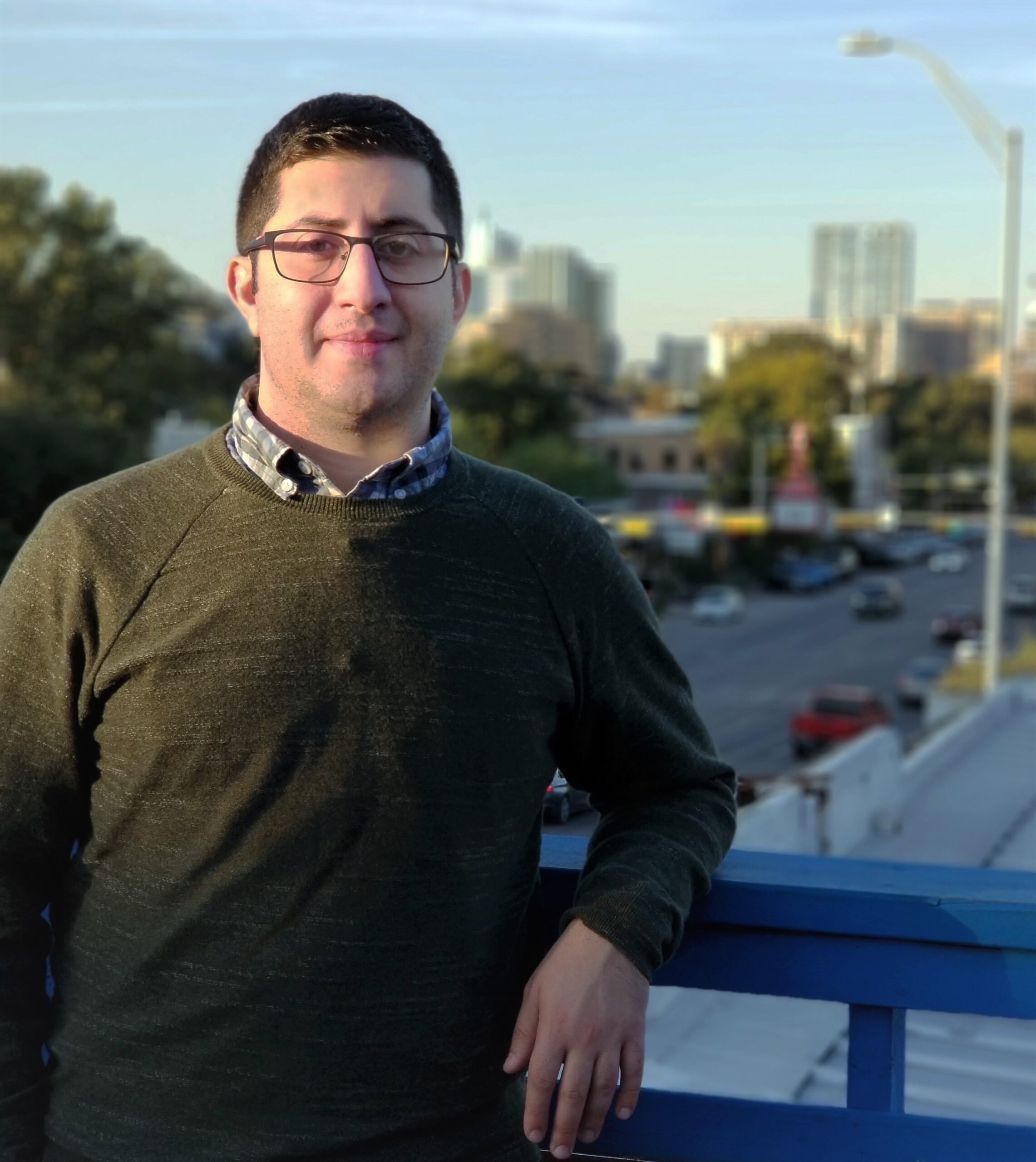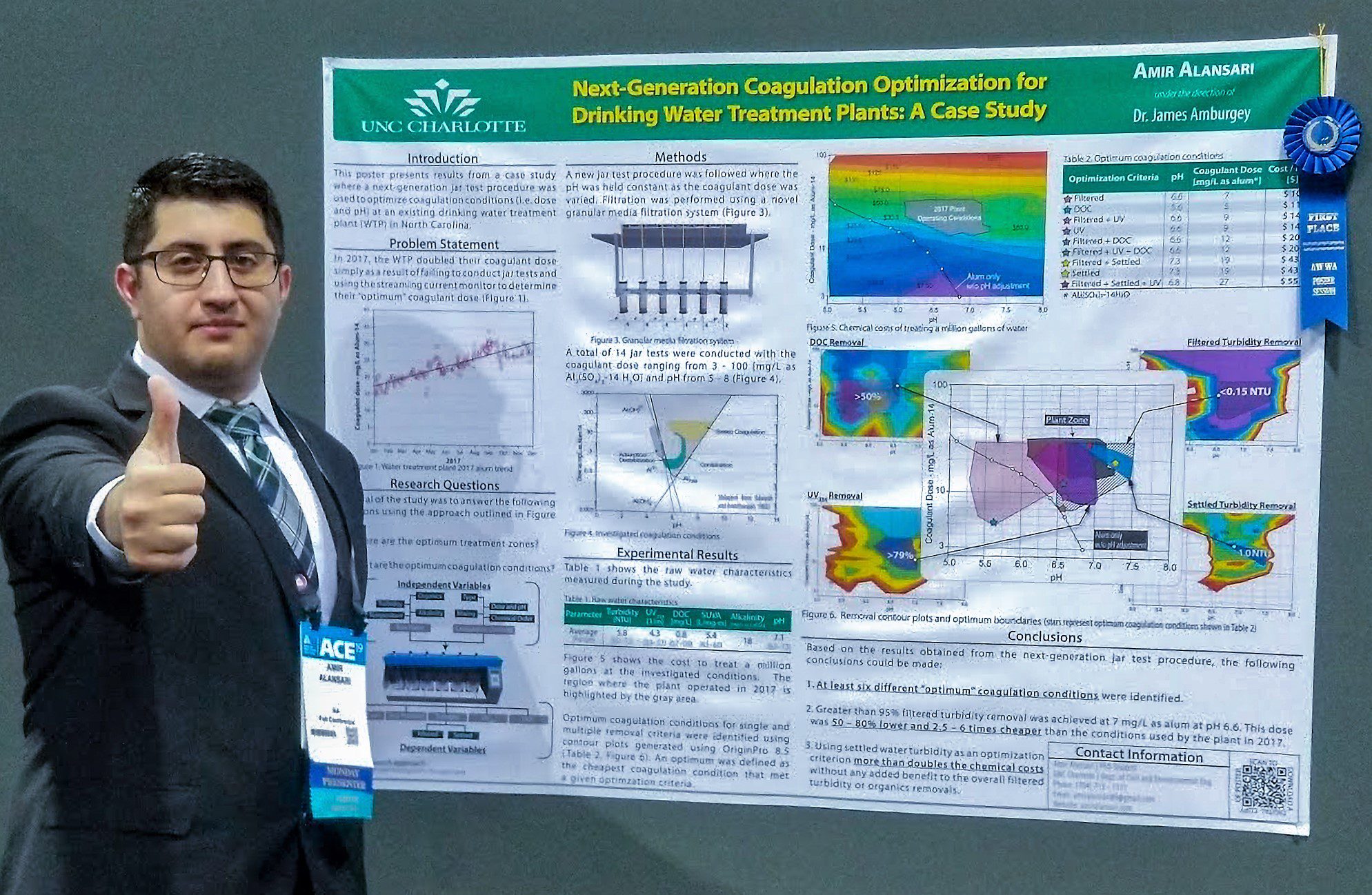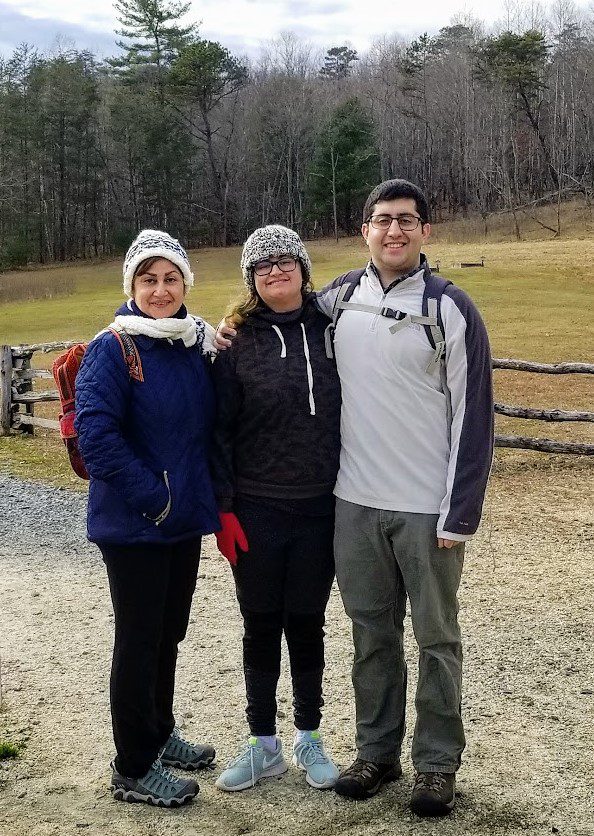AWWA Member Spotlight – Amir Alansari, Stantec, Winston-Salem, N.C.
June 29, 2022

AWWA Articles
AWWA Member Spotlight – Amir Alansari, Stantec, Winston-Salem, N.C.
 Position: Water treatment specialist
Position: Water treatment specialist
Education: B.S, M.S., Ph.D., Civil Engineering, University of North Carolina at Charlotte
 As a drinking water treatment researcher, what areas interest you? My research has spanned treatment processes, plant design, pilot plant design, control systems and process optimization. I’m currently focused on coagulation chemistry and flocculation. Lately I’ve been developing new digital tools for predicting optimal coagulation conditions using artificial intelligence. (Pictured left, Alansari with a regenerative media filter pilot system he helped build and operate at the Aquatics Research Laboratory, UNC-Charlotte.)
As a drinking water treatment researcher, what areas interest you? My research has spanned treatment processes, plant design, pilot plant design, control systems and process optimization. I’m currently focused on coagulation chemistry and flocculation. Lately I’ve been developing new digital tools for predicting optimal coagulation conditions using artificial intelligence. (Pictured left, Alansari with a regenerative media filter pilot system he helped build and operate at the Aquatics Research Laboratory, UNC-Charlotte.)
What led to your interest in water treatment? I stumbled into the world of water treatment by chance. I was in the civil and environmental engineering program and learned about a $5,000 stipend to participate in the Research Experience for Undergraduates (REU) program over the summer. The “spark” happened about one week into the REU program when I realized just how big the knowledge gap was between me and the graduate students working in the lab. I didn’t even know how to ask the right questions. It was a humbling experience. While extra pocket money was initially the motivation, it was working with Dr. James Amburgey that drew me into the fascinating world of drinking water treatment research.
 How did your career progress? I completed all three civil engineering degrees working with Dr. Amburgey. During those 12 years under his mentorship, I was able to freely follow my curiosity and work on whatever I wanted. The best advice I got from him was to use the time I had in graduate school to grow my skills as a researcher and engineer as much as possible. His reasoning was that once you are out of school, you will almost never have the time to develop new skill sets. I’m glad I took his advice because it has certainly paid off. One highlight was when I won first place at the poster competition at the 2018 NC AWWA-WEA annual fall conference. The prize was a trip to ACE19 in Denver, where I also won first place in the Fresh Ideas Poster Competition. (Pictured right, Alansari presenting his poster, “Next Generation Coagulation Optimization for Drinking Water Treatment Plants.”)
How did your career progress? I completed all three civil engineering degrees working with Dr. Amburgey. During those 12 years under his mentorship, I was able to freely follow my curiosity and work on whatever I wanted. The best advice I got from him was to use the time I had in graduate school to grow my skills as a researcher and engineer as much as possible. His reasoning was that once you are out of school, you will almost never have the time to develop new skill sets. I’m glad I took his advice because it has certainly paid off. One highlight was when I won first place at the poster competition at the 2018 NC AWWA-WEA annual fall conference. The prize was a trip to ACE19 in Denver, where I also won first place in the Fresh Ideas Poster Competition. (Pictured right, Alansari presenting his poster, “Next Generation Coagulation Optimization for Drinking Water Treatment Plants.”)
How do you hope your work, including an AWWA Water Science article you recently co-published with Amburgey, will impact the water community? I’d like to think my work is contributing to the body of knowledge, even if it is a tiny contribution. Who knows? Perhaps in 30 years another curious graduate student will download our article into their brain chip and discover something new that will take us one more step closer to finally modeling the water treatment process.
 How does your personal background influence your research? I grew up in Dubai, where seawater is the primary source of raw water available. Our tap water came from desalination plants, while our drinking water came from the grocery store in plastic bottles. For some reason, people simply did not drink tap water. I’m certain the water is safe to drink, but I think people just assume it isn’t because of the lack of public information about where the water comes from and what is in it. It made me appreciate the water service we receive in this country.
How does your personal background influence your research? I grew up in Dubai, where seawater is the primary source of raw water available. Our tap water came from desalination plants, while our drinking water came from the grocery store in plastic bottles. For some reason, people simply did not drink tap water. I’m certain the water is safe to drink, but I think people just assume it isn’t because of the lack of public information about where the water comes from and what is in it. It made me appreciate the water service we receive in this country.
Please tell us about your family and activities you enjoy in your free time. Most of my family lives in Dubai, and I usually go back at Christmas to visit family and catch up with old friends. My most recent trip before the pandemic was a two-week camping trip around Iceland. I enjoy spending most of my free time outdoors mountain biking, hiking, running, playing soccer and fishing. (Pictured left, Alansari hiking with his mother and sister at Stone Mountain State Park in North Carolina.)
Advertisement